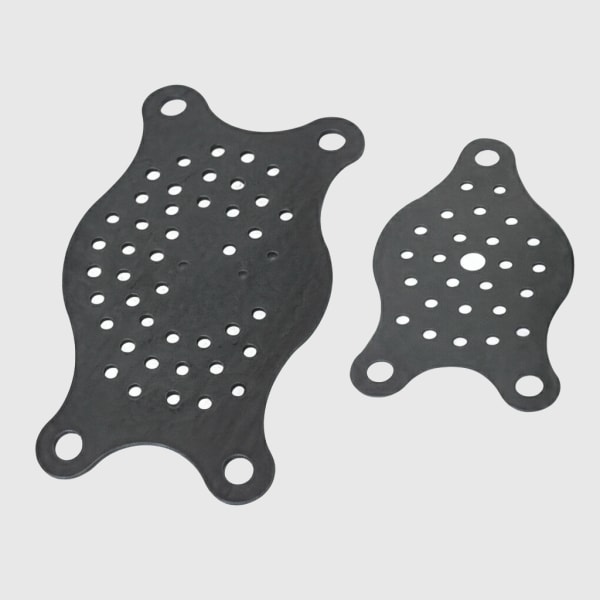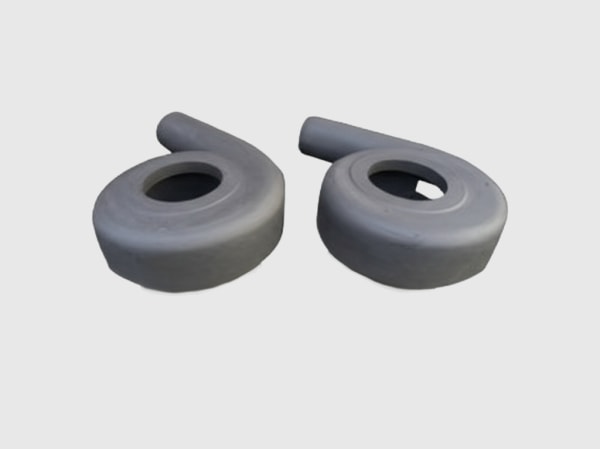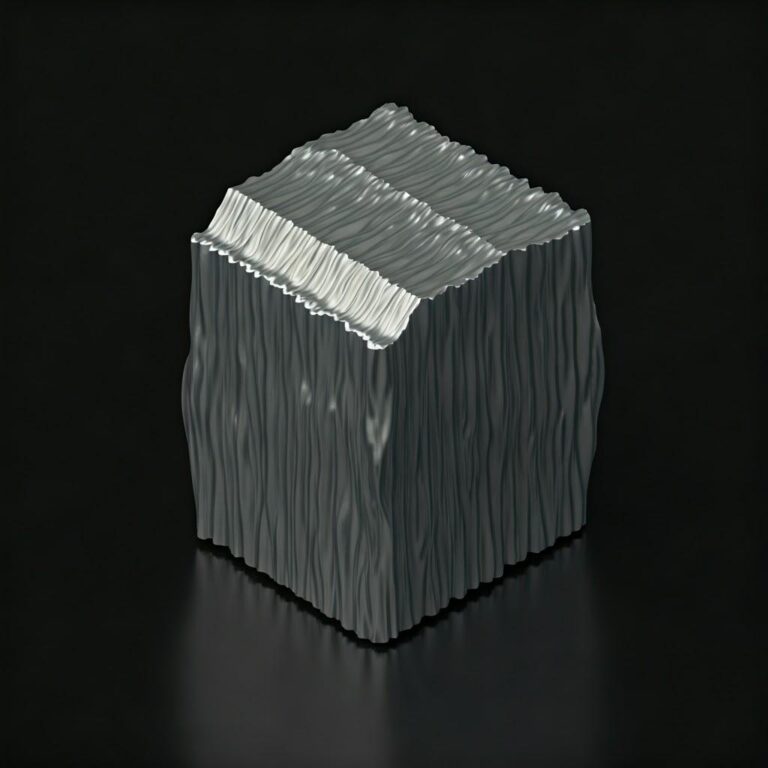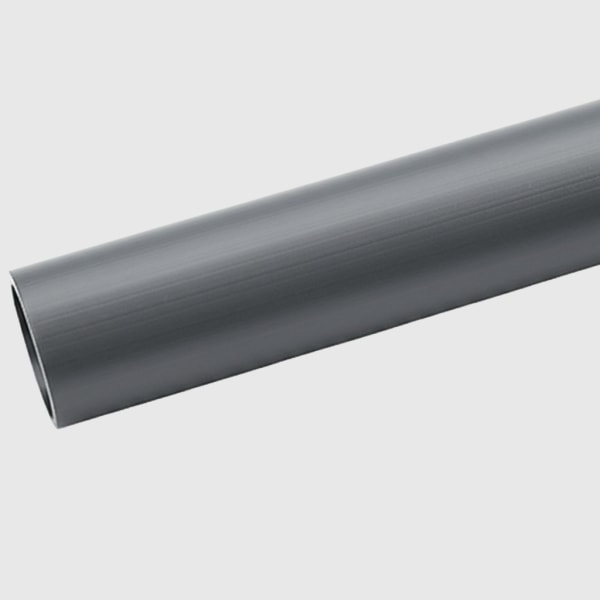Top Japanese SiC Products for Demanding Use
In the relentless pursuit of peak performance and unwavering reliability across critical industries, custom silicon carbide (SiC) products have emerged as indispensable solutions. Known for their exceptional properties, these advanced ceramic materials are pushing the boundaries of what’s possible in harsh environments. This blog post delves into the world of top Japanese SiC products, highlighting their applications, advantages, and what to consider when sourcing these vital components for your most demanding industrial needs. While we discuss general market trends, we’ll also introduce a key player in the global SiC landscape, offering unparalleled expertise and support in custom silicon carbide manufacturing.
Introduction: Custom Silicon Carbide Essentials
Custom silicon carbide products are engineered ceramic components precisely tailored to meet the unique specifications of various high-performance industrial applications. Unlike standard materials, SiC offers an extraordinary combination of properties that make it essential where conventional materials fail. Its extreme hardness, superior thermal conductivity, excellent high-temperature strength, chemical inertness, and exceptional wear resistance make it the material of choice for components operating under immense stress, corrosive environments, or elevated temperatures. From intricate semiconductor processing equipment to robust aerospace components, the demand for highly specialized SiC parts continues to grow among technical buyers, procurement managers, OEMs, and distributors.
Main Applications: SiC Across Industries
The versatility of silicon carbide allows it to serve a diverse range of critical industries, driving innovation and enhancing operational efficiency. Here’s a look at some key sectors where custom SiC products are making a significant impact:
- Semiconductor Manufacturing: SiC is crucial for wafer processing equipment, electrostatic chucks, susceptors, and other components requiring high purity, thermal stability, and plasma resistance. The precision and cleanliness offered by custom SiC components are vital for yield and quality in semiconductor fabrication.
- Automotive Industry: With the rise of electric vehicles (EVs) and hybrid vehicles, SiC power electronics are revolutionizing power conversion, enabling smaller, lighter, and more efficient inverters and chargers. Custom SiC parts are also used in braking systems and high-temperature engine components.
- Aerospace & Defense: For high-performance aerospace and defense applications, SiC offers lightweight yet incredibly strong components for missile nose cones, engine parts, and thermal management systems, where extreme temperatures and mechanical stress are common.
- Power Electronics Manufacturing: Beyond automotive, SiC power devices are transforming power grids, industrial motor drives, and renewable energy systems, offering superior efficiency and power density compared to traditional silicon-based devices.
- Renewable Energy Companies: SiC plays a pivotal role in solar inverters and wind turbine power converters, improving efficiency and reliability in energy harvesting and distribution.
- Metallurgical Companies: SiC is used in high-temperature furnaces, crucibles, and kiln furniture due to its excellent thermal shock resistance and non-wetting properties with molten metals.
- Chemical Processing Companies: Its exceptional chemical inertness makes SiC ideal for pump seals, valve components, and heat exchangers in highly corrosive environments.
- LED Manufacturing: SiC wafers serve as substrates for GaN-based LEDs, enabling higher brightness and efficiency in lighting applications.
- Industrial Equipment Manufacturers: From pump components to grinding media and sealing rings, custom SiC parts extend the lifespan and performance of industrial machinery operating under harsh conditions.
- Telecommunications Companies: SiC is increasingly used in high-frequency, high-power communication systems for its superior thermal management capabilities.
- Oil and Gas Companies: Components like seals, bearings, and nozzles made from SiC withstand abrasive slurries and corrosive fluids in drilling and processing operations.
- Medical Device Manufacturers: Biocompatibility and wear resistance make SiC suitable for certain medical instruments and components.
- Rail Transportation Companies: SiC power modules are being integrated into traction systems for trains, leading to more efficient and compact designs.
- Nuclear Energy Companies: Its radiation resistance and high-temperature stability make SiC a candidate material for advanced nuclear reactor components.
Why Choose Custom Silicon Carbide?
While standard materials might suffice for some applications, the demanding nature of modern industries often necessitates bespoke solutions. Choosing custom silicon carbide offers distinct advantages:
- Unmatched Thermal Resistance: SiC maintains its strength and structural integrity at temperatures exceeding 1,500°C, far beyond the limits of most metals and other ceramics.
- Exceptional Wear Resistance: Its extreme hardness, second only to diamond, makes it ideal for abrasive environments, significantly extending component lifespan.
- Superior Chemical Inertness: SiC resists attack from a wide range of acids, bases, and corrosive gases, making it perfect for chemical processing and other harsh environments.
- High Thermal Conductivity: Crucial for thermal management, SiC efficiently dissipates heat, preventing hot spots and ensuring stable operation of electronic components.
- Low Thermal Expansion: Minimizes thermal stresses and distortions, ensuring dimensional stability even under rapid temperature fluctuations.
- Custom Geometries: Fabrication techniques allow for the creation of complex shapes and intricate designs, precisely matching application requirements.
- Optimized Performance: Tailoring the material composition and processing methods to specific needs ensures optimal performance for each unique application.
Recommended SiC Grades and Compositions
The properties of silicon carbide can be further optimized by varying its composition and manufacturing process. Understanding the different grades is essential for selecting the right material for your application:
| SiC Grade | Description | Key Properties | Typical Applications |
|---|---|---|---|
| Reaction-Bonded SiC (RBSiC) | Porous SiC infiltrated with silicon metal during firing. Offers good strength and thermal shock resistance. | High strength, excellent thermal shock resistance, good wear resistance, relatively low porosity. | Kiln furniture, mechanical seals, heat exchangers, automotive components, pump parts. |
| Sintered SiC (SSiC) | High-density, pure SiC produced by pressureless sintering at very high temperatures. Contains very little free silicon. | Extremely high hardness, excellent wear resistance, superior corrosion resistance, high strength at elevated temperatures. | Mechanical seals, bearings, nozzles, semiconductor equipment parts, ballistic armor. |
| Nitride-Bonded SiC (NBSiC) | SiC particles bonded together by silicon nitride (Si3N4). Offers a balance of properties. | Good strength, moderate thermal shock resistance, decent wear resistance, lower cost than SSiC. | Kiln furniture, general industrial wear parts, furnace components. |
| Chemical Vapor Deposition SiC (CVD SiC) | Ultra-high purity SiC formed by chemical vapor deposition, resulting in a dense, isotropic material. | Exceptional purity, superior corrosion resistance, excellent mechanical properties, optical quality possible. | Semiconductor susceptors, optical components, mirror substrates, X-ray tubes. |
Design Considerations for SiC Products
Designing custom silicon carbide components requires a meticulous approach due to the material’s inherent hardness and brittleness. Proper design ensures manufacturability, optimizes performance, and prevents premature failure. Key considerations include:
- Geometry Limits: Avoid sharp corners, abrupt changes in cross-section, and re-entrant angles, as these can create stress concentration points. Radii are preferred.
- Wall Thickness Uniformity: Aim for consistent wall thickness to ensure even heating and cooling during processing, reducing internal stresses.
- Stress Points: Identify and minimize stress concentration areas through design modifications, such as incorporating fillets or optimizing load distribution.
- Tapering and Draft Angles: For molded or pressed parts, appropriate taper and draft angles facilitate part removal from tooling.
- Mounting Features: Design mounting holes or features with sufficient material around them to prevent chipping or cracking during assembly and operation. Consider inserts if direct fastening is needed.
- Machinability: While hard, SiC can be machined to precise tolerances using diamond grinding. Design with machining access in mind.
Tolerance, Surface Finish & Dimensional Accuracy
Achieving tight tolerances and specific surface finishes with SiC is possible but often requires advanced machining techniques. Discussing these requirements early with your supplier is crucial for managing expectations and costs.
- Achievable Tolerances: Depending on the part size, complexity, and manufacturing method (e.g., green machining, diamond grinding), tolerances can range from ±0.05 mm to ±0.005 mm or even tighter for highly critical dimensions.
- Surface Finish Options: Surface finishes can range from as-fired (rougher) to ground, lapped, or polished. Polished surfaces achieve the lowest roughness (Ra < 0.1 µm) and are often required for sealing surfaces or optical applications.
- Dimensional Accuracy: High dimensional accuracy is critical for components interacting with other precision parts, such as seals, bearings, or semiconductor equipment. The final achievable accuracy depends heavily on the chosen manufacturing process and post-processing steps.
Post-Processing Needs
To enhance the performance, durability, or specific functional characteristics of custom SiC components, various post-processing steps may be necessary:
- Grinding: Diamond grinding is the primary method for achieving tight tolerances and desired surface finishes on dense SiC parts.
- Lapping & Polishing: For extremely smooth surfaces, such as those required for seals, optical applications, or semiconductor processing, lapping and polishing provide superior surface finishes.
- Sealing: While SiC is inherently dense, some applications might require additional sealing processes to ensure vacuum integrity or prevent fluid ingress, especially for reaction-bonded grades.
- Coating: In certain instances, specific coatings (e.g., specialized ceramic coatings, CVD SiC coatings) can be applied to enhance surface properties like corrosion resistance, wear resistance, or electrical conductivity for particular applications.
- Joining: Techniques like active brazing or mechanical fastening may be employed to integrate SiC components into larger assemblies.
Common Challenges and How to Overcome Them
Despite its superior properties, working with silicon carbide presents certain challenges. A knowledgeable supplier can help mitigate these issues:
- Brittleness: SiC is inherently brittle, making it susceptible to chipping or fracture under impact or tensile stress. Design considerations (e.g., avoiding sharp corners) and careful handling are crucial.
- Machining Complexity: Its extreme hardness makes machining difficult and costly, requiring specialized diamond tooling and expertise. Collaborate with suppliers experienced in SiC machining.
- Thermal Shock Sensitivity: While generally good, rapid and extreme temperature changes can still induce thermal shock, especially in complex geometries. Proper design and controlled heating/cooling rates can help.
- Cost: The raw materials and manufacturing processes for SiC are more expensive than conventional materials. Focus on the total cost of ownership, considering extended lifespan and performance benefits.
- Material Selection: Choosing the wrong SiC grade for an application can lead to suboptimal performance. A comprehensive understanding of the different SiC types and their properties is essential.
How to Choose the Right SiC Supplier
Selecting a reliable and capable supplier is paramount for successful custom silicon carbide projects. Look for partners who demonstrate:
- Technical Capabilities: Assess their expertise in material science, design for manufacturability, and advanced machining techniques for SiC.
- Material Options: Ensure they offer a wide range of SiC grades (RBSiC, SSiC, CVD SiC, etc.) to match your specific application requirements.
- Quality Control & Certifications: Verify their adherence to international quality standards (e.g., ISO 9001) and their ability to provide material certifications and traceability.
- Experience & Track Record: Look for a supplier with a proven history of successful projects in your industry, demonstrating their understanding of specific application challenges.
- Customer Support: A responsive and knowledgeable team for technical discussions, design assistance, and ongoing support is invaluable.
- Supply Chain Reliability: For critical components, assess their ability to ensure consistent quality and on-time delivery.
When considering your options, it’s worth noting the significant advancements and robust manufacturing capabilities emerging from specific regions. For example, the hub of China’s silicon carbide customizable parts manufacturing is situated in Weifang City, China. This region has become home to over 40 silicon carbide production enterprises of various sizes, collectively accounting for more than 80% of the nation’s total silicon carbide output.
We, Sicarb Tech, have been instrumental in this growth, introducing and implementing cutting-edge silicon carbide production technology since 2015. We have actively assisted local enterprises in achieving large-scale production and significant technological advancements in product processes, witnessing firsthand the emergence and ongoing development of the local silicon carbide industry. As part of Chinese Academy of Sciences (Weifang) Innovation Park, which collaborates closely with the National Technology Transfer Center of the Chinese Academy of Sciences, Sicarb Tech benefits from a robust scientific and technological foundation. We leverage the extensive talent pool and scientific capabilities of the Chinese Academy of Sciences, acting as a bridge for the integration and commercialization of scientific and technological achievements. This commitment to innovation and quality means we can offer you higher-quality, cost-competitive customized silicon carbide components. Our domestic top-tier professional team specializes in customized production of silicon carbide products, and under our support, over 471 local enterprises have benefited from our technologies. We possess a wide array of expertise, including material science, process development, design optimization, and measurement & evaluation technologies, enabling us to meet diverse customization needs. Furthermore, if you are looking to establish a professional silicon carbide products manufacturing plant in your country, Sicarb Tech can provide comprehensive technology transfer services, along with a full range of turnkey project solutions, including factory design, procurement of specialized equipment, installation and commissioning, and trial production. This ensures a more effective investment, reliable technology transformation, and a guaranteed input-output ratio, providing you with more reliable quality and supply assurance within China and beyond.
Cost Drivers and Lead Time Considerations
Understanding the factors that influence cost and lead time is essential for effective project planning and procurement of custom SiC products:
| Cost Driver | Description | Impact on Pricing |
|---|---|---|
| Material Grade | Purity, density, and manufacturing process of the SiC (e.g., SSiC is generally more expensive than RBSiC). | Higher purity and more complex manufacturing methods increase cost. |
| Part Complexity & Geometry | Intricate designs, thin walls, small features, and tight radii. | More complex geometries require specialized tooling and extensive machining, increasing cost. |
| Tolerances & Surface Finish | Achieving very tight tolerances or highly polished surfaces. | Requires precision grinding, lapping, and polishing, adding significant cost and time. |
| Volume | Quantity of parts ordered. | Higher volumes generally lead to lower per-unit cost due to economies of scale. |
| Post-Processing Needs | Additional steps like sealing, coating, or specialized joining. | Each additional process adds to the overall cost. |
| Inspection & Testing | Rigorous quality control, non-destructive testing (NDT), and performance validation. | Necessary for critical applications but adds to the cost. |
Lead Time Considerations: Lead times for custom SiC products can vary significantly (from weeks to several months) depending on the material availability, part complexity, current production backlog, and required post-processing steps. Early engagement with your chosen supplier is crucial to discuss realistic timelines and manage project schedules effectively.
Frequently Asked Questions (FAQ)
-
What is the typical lifespan of a custom SiC component?
The lifespan of a custom SiC component is highly dependent on the specific application, operating conditions (temperature, pressure, chemical environment), and mechanical stresses. However, due to SiC’s superior wear and corrosion resistance, components often last significantly longer than those made from conventional materials, leading to reduced downtime and replacement costs. Many SiC parts are designed for years of continuous service in demanding environments.
-
Can silicon carbide be repaired if damaged?
Due to its extreme hardness and brittleness, repairing SiC components is generally not feasible in the same way as metals. Small chips or cracks can sometimes be addressed with specialized bonding agents or localized grinding, but for critical applications, replacement is usually recommended to ensure performance and safety. Prevention through proper design, handling, and operation is key.
-
Is silicon carbide electrically conductive?
The electrical conductivity of silicon carbide varies significantly depending on its purity and doping. Pure SiC is a wide-bandgap semiconductor, making it suitable for high-power, high-frequency electronic devices. However, some grades, especially those with certain impurities or bonding agents (like free silicon in RBSiC), can exhibit higher electrical conductivity. For insulating applications, specific high-purity grades or surface treatments may be required. Always specify your electrical requirements to your supplier.
Conclusion
Custom silicon carbide products represent a cutting-edge solution for industries facing the most extreme operational challenges. Their unparalleled thermal, mechanical, and chemical properties make them essential for applications where performance, reliability, and longevity are paramount. By understanding the material’s advantages, design considerations, and the critical factors in choosing a reputable supplier, engineers, procurement managers, and technical buyers can harness the full potential of SiC. As industries continue to push boundaries, the demand for sophisticated, tailor-made SiC components will only grow, solidifying its position as a cornerstone of advanced industrial manufacturing. Partnering with experienced suppliers, like Sicarb Tech, who possess deep technological know-how and a proven track record, ensures you receive not only high-quality customized SiC solutions but also comprehensive support for your most ambitious projects.





